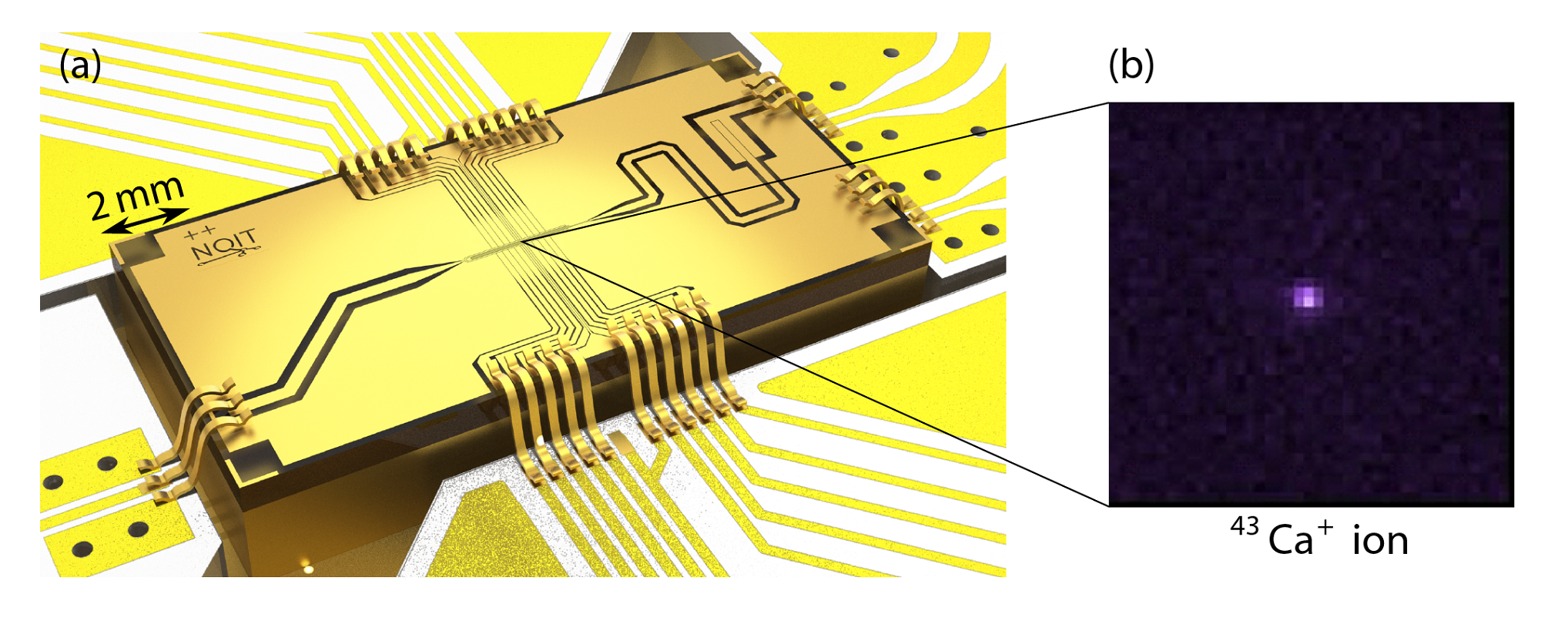COMET
Significant progress towards the construction of a quantum computer has been made over the past three decades. The largest challenges in building a quantum computer are `fidelity' and ‘scalability'. Small errors in a quantum operation can build up over a full calculation, which can lead to an overall significant calculation error. However, as with conventional computers, once the errors in an operation are small enough, they can be removed using error correction. The fidelity of each operation must reach beyond a limit known as the 'fault-tolerant threshold' for error correction to function. For the most advanced error correction algorithms, the error rate must be <1%, however in practice it is important for operations to exceed this limit to prevent error correction from requiring unrealistic overheads (large number of additional qubits, experimental equipment etc.). In addition, the techniques used to produce these extremely low error rates need to be suitable for scaling to many thousands of qubits, thus posing a further challenge.

Trapped atomic ions have proven to be one of the most successful qubits to date. These qubits typically exist in the optical domain operating on electric-quadrupole transitions [Phys. Rev. A 61, 023405], or in the microwave-domain between hyperfine manifolds [Phys. Rev. Lett. 75, 4714]. Although hyperfine-qubits exist in the microwave domain, they are usually manipulated using stimulated Raman transitions with tightly-focused laser beams, as the short optical wavelength facilitates single qubit addressing [Phys. Rev. A 60, 145] and efficient coupling to the ions spin and motional degrees of freedom [J. Res. Natl. Inst. Stand. Technol. 103, 259]; operations which are not feasible with far-field microwave radiation without the use of strong static magnetic field gradients (Phys. Rev. A 91, 012319). In recent times, it has been shown that the near-field magnetic field gradients produced by a conductor carrying microwave current are sufficiently large to facilitate strong coupling between the ions' spin and motional degrees of freedom [Phys. Rev. Lett. 101, 090502; Nature 476, 181-184].
Microwave technology is vastly more developed than laser technology, existing in many everyday devices such as mobile phones. Not only is microwave technology commercially available at a considerably lower cost than laser systems, it is also significantly easier to control. Microwave systems also benefit from their ability to be directly integrated into control structures, facilitating the production of chip-based ion-traps, which can be scaled into a quantum `CCD-like' device. Our research group has previously shown that microwave control of trapped-ion qubits [Phys. Rev. Lett. 101, 090502; Nature 476, 181-184] is possible with two-qubit gate errors of 0.3% [Phys. Rev. Lett. 117, 140501], a fidelity which is approaching the state-of-the-art for laser-based methods.
Our current experiment, named COMET (Cryogenically Operated Microwave Electrode Trap), is a next-generation surface-electrode ion-trap designed to improve upon our previous two-qubit gate speed and fidelity. We aim to achieve these fidelity and speed improvements through a novel trap and qubit design. 43Ca+ ions are trapped at a height of d=40 µm above the trap surface, approximately half the previous ion-to-trap distance [Phys. Rev. Lett. 117, 140501]. This increases the achievable microwave field strength and hence the two-qubit gate speed. A disadvantage of the reduced ion height is the possible increase in electric field noise due to close proximity to the trap surface. The trap is cooled to cryogenic temperatures of T=20 K to mitigate this potential noise increase [Phys. Rev. Lett. 100, 013001]. The trap is also able to produce large microwave field gradients whilst passively nulling the field amplitude, which reduces off-resonant excitation of the qubits and is expected to increase the achievable gate fidelity. The qubit is defined on a π-polarised hyperfine transition which is first-order insensitive to magnetic field noise at a local magnetic field of 288G, facilitating a qubit coherence time of the order of minutes.
People
Current
- Prof. David Lucas (PI)
- Dr. Mario Gely (Senior postdoc)
- Aaron Leu (Graduate student)
- Molly Smith (Graduate student)
- Emma Vandrey (Graduate student)
Former
- Marius Weber (Graduate student)
- Clemens Löschnauer (Graduate student)
- Dr. Ryan Hanley (Postdoc)
- Dr. Thomas Harty (Postdoc)
- Dr. Jochen Wolf (Graduate student)
- Dr. Joseph Goodwin (Postdoc)
Contact
Publication highlights
- Single-qubit gates with errors at the 10-7 level, Phys. Rev. Lett. 134, 230601
- Polarization-insensitive state preparation for trapped-ion hyperfine qubits, Phys. Rev. A 110, L040402
- Individually addressed quantum gate interactions using dynamical decoupling, PRX Quantum 5, 030321
- Fast, high-fidelity addressed single-qubit gates using efficient composite pulse sequences, Phys. Rev. Lett. 131, 120601 (2023)
- Cryogenic ion trap system for high-fidelity near-field microwave-driven quantum logic, Quantum Sci. Technol. 9, 015007
- High-fidelity trapped-ion quantum logic using near-field microwaves, Phys. Rev. Lett. 117, 140501 (2016)
- Probing qubit memory errors at the part-per-million Level, Phys. Rev. Lett. 123, 110503 (2019)
